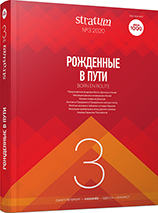Бельское городище: миграции и развитие комплекса
Belsk Hillfort: Migration and Evolution of the Assemblage
Author(s): Denis S. Grechko, Victoria V. Kotenko, Aleksei A. KriutchenkoSubject(s): History, Archaeology, Ancient World, Migration Studies
Published by: Издательский дом Stratum, Университет «Высшая антропологическая школа»
Keywords: forest-steppe of the Dnieper Left Bank; Scythia; 6th—4th BC; Belsk hillfort; fortifications; nomad migrations;
Summary/Abstract: Ethnocultural history of the population of south of Eastern Europe in the 6th—4th centuries BC was dynamic due to various types of migrations. Belsk hillfort, as the centerpiece of the tribes of the forest-steppe of the Dnieper Left-Bank, was an indicator of these changes.Recent studies allow to date the formation of the Belsk hillfort around the middle — the beginning of the third quarter of 6th century BC. It was associated with the campaign of new groups of nomads from Ciscaucasia and eastern regions to the west and the return of part of the nomads back to the forest-steppe of the Dnieper Left Bank. The appearance of the aristocratic burials in the Belsk necropolis (530—520 BC) suggests that it was them who were the initiators of the foundation of the “giant” hillfort (Gelonus of Herodotus?).At the end of the first third of the 5th century BC a significant part of the hillfort ceases to be used by the agricultural population. The new necropolises appear, including the territory of the fortification. These changes can be associated with the entry of the Forest-Steppe tribes into the northern Black Sea Scythia.The end of the Belsk hillfort was associated with the disappearance of the local aristocracy. It occurred at the end of the 4th century BC synchronously with the finale of Scythia, as the leading force in the south of Eastern Europe. The settlement was never destroyed by enemies, but it was left as unnecessary in the new historical realities.
Journal: Stratum plus. Археология и культурная антропология
- Issue Year: 2020
- Issue No: 3
- Page Range: 53-72
- Page Count: 20
- Language: Russian
- Content File-PDF

